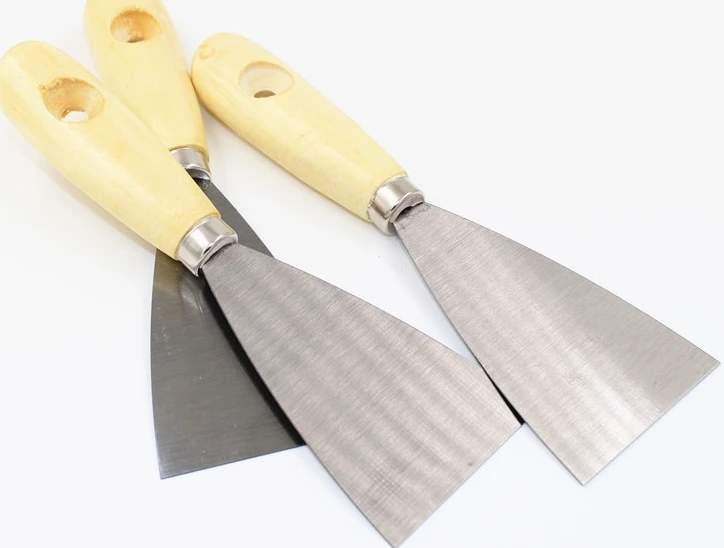
The corners of the blade shall not be used to dig at the residues.Ī revised definition was established in 2018, as:Ģ018 Version in SSPC-SP2 and SP3 (but SSPC Glossary not updated – see “Uncovering a Conundrum” later in this article) DULL PUTTY KNIFE (for use as an inspection tool): A commercially manufactured, straight, flexible metal blade capable of returning to its original shape without permanent distortion after being bent by hand around a 28 to 33-cm (11 to 13-in) diameter mandrel (or pipe or other curved surface). When used to test paint, mill scale, or rust remaining on the surface after cleaning, the blade shall be held flat against the surface and at a maximum of 45 degrees to the surface. It shall not be used if the edge is nicked or gouged, or if dry paint or other material is present along the edge that would prevent the blade from making intimate contact with the surface. Let’s take a look.įirst, what exactly is a “dull putty knife?” If I asked you to define what composes a dull putty knife, you may respond, “Well, I can’t define it, but I’ll know it when I see it.” The truth is it was well-defined in the 2011 version of the SSPC Glossary as:Ģ011 Version in SSPC Glossary – DULL PUTTY KNIFE (for use as an inspection tool): A commercially manufactured metal blade with these characteristics: width – 1-1/2 to 3-inches length – 3 to 5-inches thickness – 30 to 50 mils.The putty knife is acceptable for use if the thickness at end of the blade is not less than 25 mils or 75% of its original thickness, whichever is greater.

Curious looks aside, the dull putty knife is real, defined, and is referenced in surface preparation standards more than you may think. Imagine the look on your client’s face as you attempt to explain to them that the acceptability of the cleanliness of a steel surface prior to application of a maintenance coating system is based, in part, on the use of a dull putty knife – ironically the same type of tool that may be used to perform the cleaning (think SSPC-SP 2, Hand Tool Cleaning). Okay, now be honest… how many of you have a dull putty knife in your inspection instrument kit? And if you have one, are you sure it’s the correct dimensions and is “dull?” It may or may not represent the views of AMPP: The Association for Materials Protection & Performance, even though SSPC, NACE, and AMPP standards are frequently referenced in the content. It is occasionally written blog style, and represents the views of the author and KTA-Tator, Inc.

KTA’s Certified Coating Inspector Forum is designed to provide continuing education on standards, inspection practices, new instruments, and other topics to help keep certified AMPP and FROSIO coating inspectors current.


 0 kommentar(er)
0 kommentar(er)
